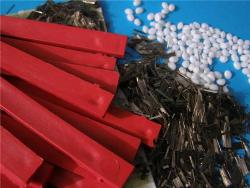Feb 27 2010
The CIDEMCO-Tecnalia Technological Centre is coordinating the FACOMP project, for sections of curtain walls based on polymeric nanocomposites. This is a European project financed by the Seventh Framework Programme (FP7) within the remit for research favouring small and medium sized companies, to finish in October 2011.
Together with CIDEMCO-Tecnalia are enterprises both in the composites and the façades sectors, such as Exel Composites (U.K.), Sika Italia, Isotest Engineering (Italy), Enar Envolventes Arquitectónicas (Spain), Technocladd Architectural and Technological Claddings (Spain) and the Swedish Institute of Composites, Swerea-Sicomp.
 Nanomaterials
Nanomaterials
The principal goal of the project, with a budget of nearly 1.5 million euros, is to define a new type of curtain wall using polymeric nanomaterials instead of steel or aluminium.
Curtain walls are one of the most common types of building façade currently used, due to its ease of construction and its lightness and to the wide variety of materials and textures that can be used for their final surface finish. The materials most used currently in systems for curtain wall sections are aluminium and steel. Nevertheless, these materials often have problems of supply and poor thermal behaviour, amongst other drawbacks.
The new system developed should have mechanical properties equal to or better than these materials, be lighter and more resistant to bad weather, and have improved thermal and acoustic behaviour. Also, the development of this new material will involve the redesign or adaptation of the rest of the curtain wall components (joints, silicones glass, etc.).
The project has passed its half-way stage and the new composites to be used for the new façades are currently being chosen, and a first prototype of a possible design prepared.
Anticipated achievements of project
Amongst the achievements anticipated for the project is the development of composite sections the most outstanding characteristics of which are that their mechanical behaviour is equal to or better than aluminium sections, enhancement in thermal insulation and behaviour in bad weather compared to aluminium sections.
To this end, an optimisation of the formulation and techniques for the composite processing is being undertaken. The team is working on both thermoplastic and thermostable polymers reinforced with inorganic fibres and nanomaterials, and different processing techniques are being studied.
As a final achievement the creation of a real-scale curtain wall prototype using the new nanocomposite sections is anticipated.
Nanotechnology
In this project in concrete, nanotechnology will enable obtaining greater rigidity and resistance in the final material, as well as enhanced performances against fire. The use of nanomaterials is growing fast in many sectors thanks to the advances offered for various fields, such as engineering, medicine and packaging.
Properties of the material
The material that will be developed for the sections is a polymeric nanocomposite reinforced with fibres and nanoparticles (nanoclay). This type of material presents multiple advantages: flexibility in design, lightness, excellent behaviour in bad weather conditions, an absence of corrosion, absence of electromagnetic interference and good mechanical properties against fire.
Source: http://www.basqueresearch.com